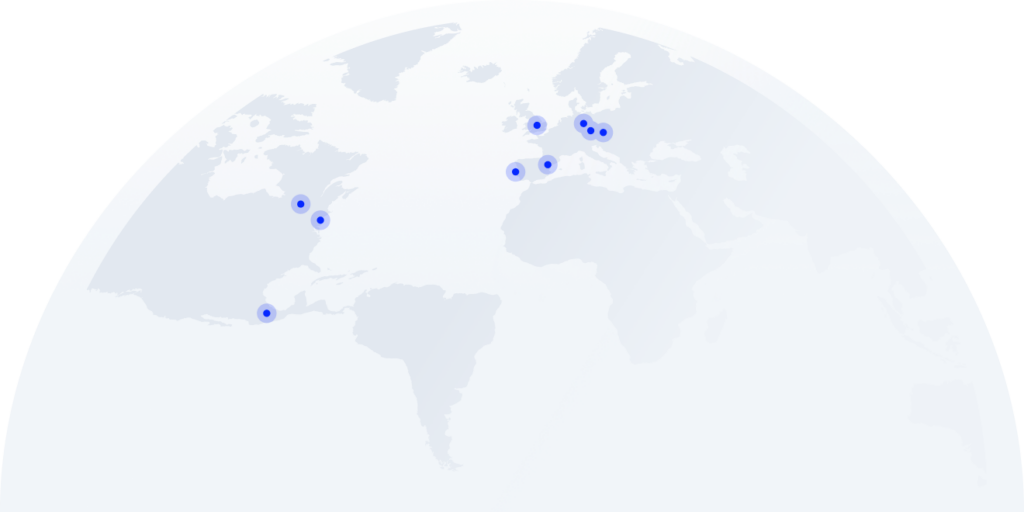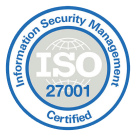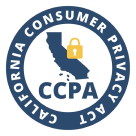
Most teams don’t need more software. They need their software to stop getting in the way.
Every lost deal, delayed follow-up, or missed upsell usually comes down to the same problem: critical information is scattered. A call in one tool. A ticket in another. A payment, unread, buried in email. HubSpot can centralize the process—but only if it’s connected to the rest of your stack.
That’s where integrations start being non-negotiable. In fact, McKinsey reports that employees spend nearly 1.8 hours every day—almost 20% of their time—just searching for information or tracking down coworkers ¹. That’s an entire workday lost every week.
In this guide we identified 12 of the most common breakdowns across sales, support, and ops—and matched each with one HubSpot integration that actually solves it.
Not because it fits a category. Because it fixes a problem.
Key Takeaways:
- HubSpot integrations eliminate silos by connecting calls, messages, payments, and CRM data in one flow.
- Each integration solves a real use case—no bundles, no bloat, just purpose-built solutions.
- Setup time matters. The best HubSpot integrations launch fast and scale with your team.
- Smart integrations reduce manual work and improve speed without increasing headcount.
- The value isn’t more tools—it’s fewer blockers between your team and the customer.
No more tab-switching. Just seamless workflows.
What Is a HubSpot Integration?
A HubSpot integration connects your CRM with the rest of your tech stack—so information moves automatically, teams stay in sync, and no one wastes time digging for context.
Instead of copying data from one tool to another, integrations do it for you. They keep your call logs, support tickets, emails, payments, and tasks connected—so HubSpot reflects what’s actually happening in your business, in real time.
Here’s what that enables:
- Automate workflows: trigger emails, assign tasks, or update records when someone takes action
- Sync data: make sure contact info, deal status, and activity history stay up to date everywhere
- Trigger actions: set off alerts, create follow-ups, or move pipeline stages based on what happens in other tools
Take CloudTalk’s HubSpot integration. It lets your team:
- Call leads directly from HubSpot
- Auto-log conversations and notes
- Work with full context—no switching tabs, no backtracking
The point isn’t just efficiency. It’s accuracy. Integrations make HubSpot your source of truth, not just a place to store leads.
Want Hubspot to talk to your dialer, VoIP, and helpdesk?
The 12 Key Hubspot Integrations for Businesses in 2025
HubSpot works best when it’s not working alone. Below are 12 integrations—each chosen to solve a specific business problem and match what real users are searching for.
Hubspot integration summary table:
1. CloudTalk
CloudTalk is a modern cloud-based phone system built for teams that rely on voice to close deals and resolve issues. Its native integration with HubSpot brings full calling functionality directly into the HubSpot interface—so your agents never have to leave their workspace to place or log a call.
Use Case:
Empower your team to make and receive CloudTalk calls from inside HubSpot while automatically syncing contact info, conversation history, and CRM data behind the scenes.
Benefits:
- Improved agent productivity with automated call workflows
- Better customer experience through real-time access to caller data
- No more tab-switching—voice operations live inside HubSpot
Key Features:
- Real-time call monitoring
- AI-Powered Conversation Intelligence
- Call recording and playback
- Sentiment Analysis
Pricing:
CloudTalk offers flexible plans tailored to business needs. With each of its plans offering more value than its competitors:
- Lite: $19/user/month (Americas)
- Starter: $25/user/month
- Essential: $29/user/month
- Expert: $49/user/month
- Custom: Pricing available upon request
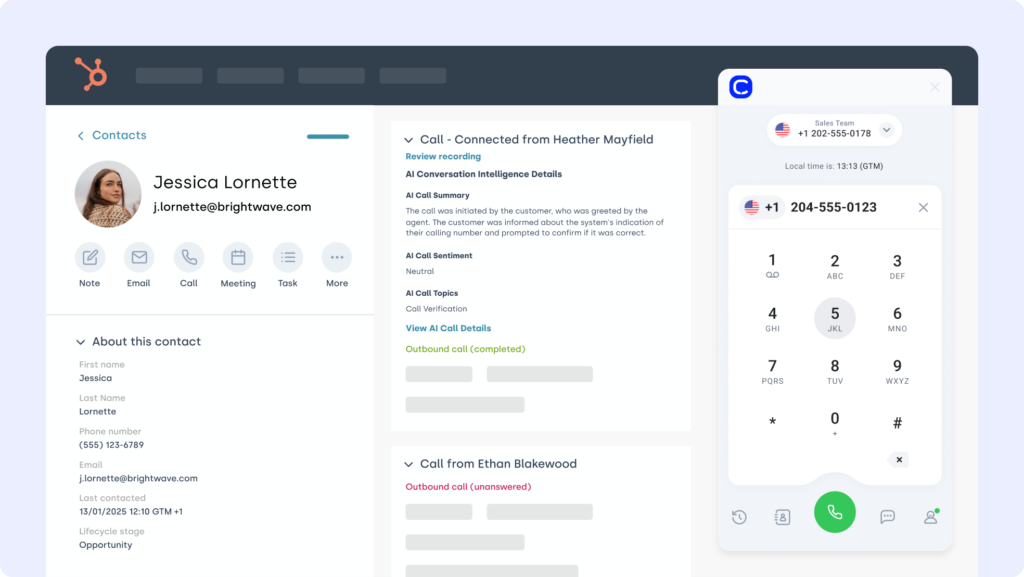
2. Salesforce (CRM)
Salesforce is one of the most powerful CRM platforms on the market—used by sales and support teams to manage deals, contacts, and account histories. The HubSpot Salesforce integration keeps customer data, marketing activity, and sales updates aligned across both platforms in real time.
Use Case:
Sync leads, marketing campaigns, and account updates between HubSpot and Salesforce automatically—so both platforms reflect the same pipeline, without manual effort.
Benefits:
- Connect marketing and sales data for cleaner handoffs
- Give reps full visibility into lifecycle stages and CRM activity
- Reduce manual entry with auto-synced fields and statuses
Key Features:
- Two-way sync between Salesforce and HubSpot
- Map custom fields and pipeline stages
- Keep contact, deal, and campaign data up to date in both systems
Pricing:
Salesforce offers various pricing tiers:
- Sales Cloud Essentials: $25 per user/month
- Sales Cloud Professional: $75 per user/month
- Sales Cloud Enterprise: $150 per user/month
- Sales Cloud Unlimited: $300 per user/month
Salesforce dialer pricing guide
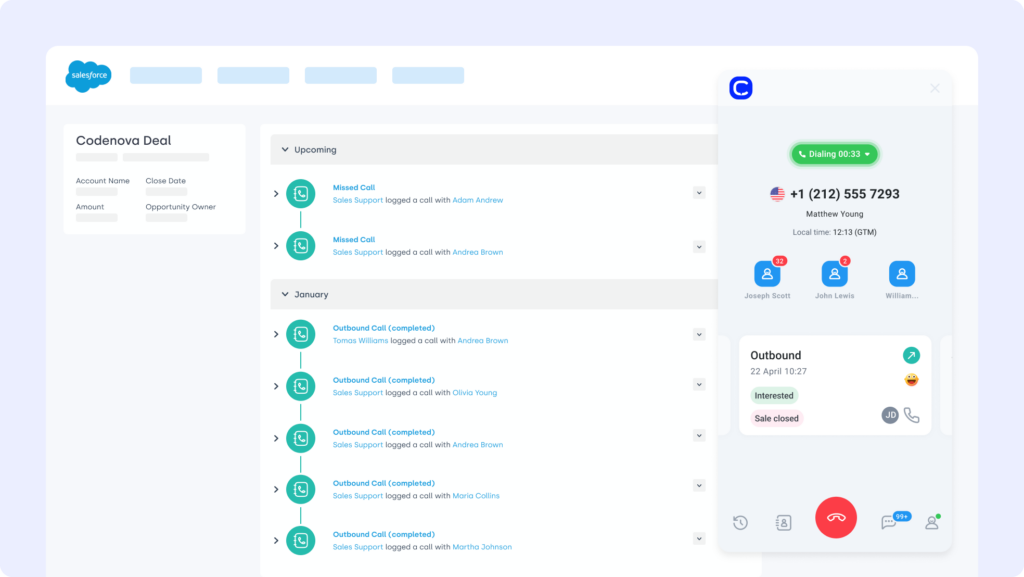
3. Zendesk (Support Platform)
Zendesk is a leading customer support platform. The HubSpot Zendesk integration bridges ticketing and CRM—giving agents visibility into customer issues and histories without jumping between tools.
Use Case:
Automatically create Zendesk tickets from HubSpot activity, track updates in real time, and escalate priority issues without leaving the CRM.
Benefits:
- Sync tickets between HubSpot and Zendesk to streamline support
- Improve resolution speed with unified customer context
- Ensure no request slips through the cracks with synced records
Key Features:
- Auto-generate Zendesk tickets from HubSpot interactions
- See real-time status updates inside HubSpot
- Link Zendesk records directly to HubSpot contacts or deals
Pricing:
Zendesk pricing tiers include:
- Support Team: $19 per agent/month
- Support Professional: $55 per agent/month
- Support Enterprise: $115 per agent/month
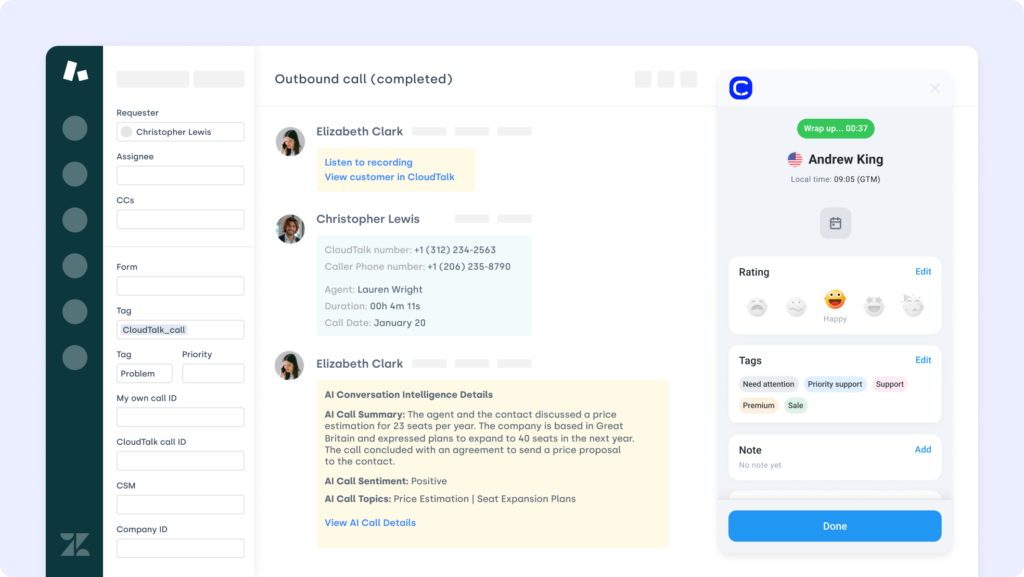
4. Zapier (Automation Platform)
Zapier is a no-code automation tool that lets you connect HubSpot with thousands of other apps. The HubSpot Zapier integration helps marketing, sales, and support teams automate repetitive workflows across their entire stack.
Use Case:
Use Zaps to trigger automated responses, update records, or log HubSpot activity in tools like Google Sheets, Slack, or Trello—without lifting a finger.
Benefits:
- Eliminate manual work with event-based automation
- Reduce human error across connected apps
- Free up your team to focus on high-value tasks
Key Features:
- Connect HubSpot with 5,000+ apps using Zaps
- Auto-update CRMs, spreadsheets, or project boards
Pricing:
Zapier offers various pricing tiers:
- Free: $0/month
- Starter: $19.99/month (billed annually)
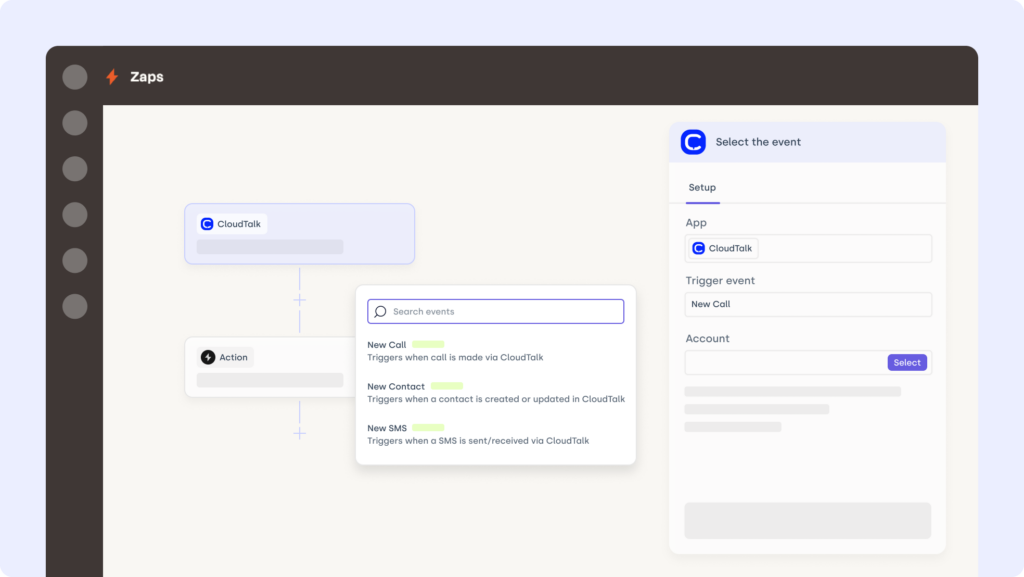
5. Pipedrive (CRM)
Pipedrive is a sales-focused CRM known for its visual pipeline and automation tools. The HubSpot Pipedrive integration connects deal tracking with marketing workflows—ideal for aligning sales and lead nurturing.
Use Case:
Sync lead updates, activities, and follow-up tasks between HubSpot and Pipedrive to ensure your sales team always has the latest context—without jumping between platforms.
Benefits:
- Eliminate CRM busywork with automated activity syncing
- Align marketing and sales by sharing contact data across tools
- Move deals faster by triggering Pipedrive workflows from HubSpot actions
Key Features:
- Log HubSpot activity and form submissions into Pipedrive
- Sync contacts, deals, and lead status between platforms
- Trigger automations based on HubSpot actions
Pricing:
Pipedrive offers flexible plans based on team size and needs:
- Essential: $14.90/user/month
- Advanced: $27.90/user/month
- Professional: $49.90/user/month
- Power & Enterprise: Custom pricing
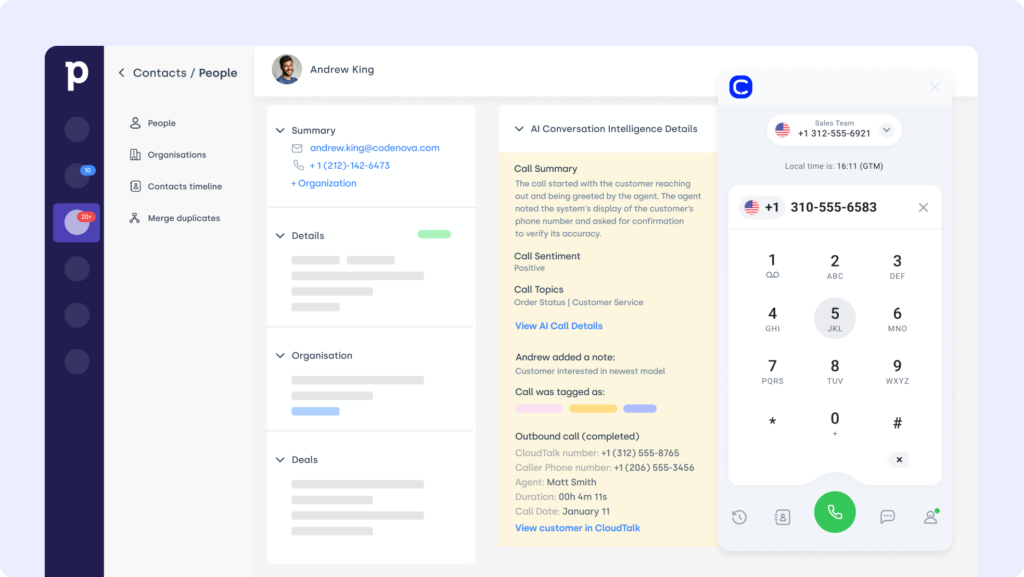
6. Front (Shared Inbox Platform)
Front is a collaborative inbox platform that centralizes email, chat, and SMS into one streamlined interface. The HubSpot Front integration brings structured conversations and CRM data together—so teams can respond faster with full context.
Use Case:
Surface Front activity—like replies, mentions, or tags—inside HubSpot to keep conversations visible, prioritize follow-ups, and align support with sales.
Benefits:
- Sync inbox activity with real-time customer records
- Gain shared visibility across support and account teams
- Respond faster with context from all communication channels
Key Features:
- View Front messages and internal notes in HubSpot
- Trigger alerts based on SLA, tags, or status changes
- Link HubSpot contacts to Front conversations for better tracking
Pricing:
- Starter: $19/user/month
- Growth: $59/user/month
- Scale: $99/user/month
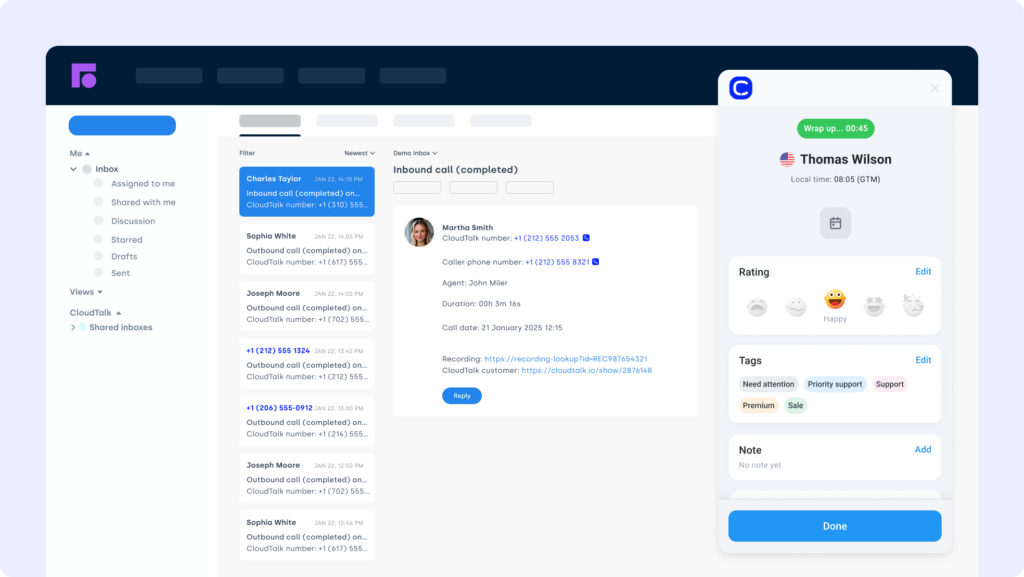
7. Zoho CRM
Zoho CRM is a flexible platform for managing customer relationships across sales, marketing, and service. The HubSpot Zoho CRM integration helps unify contact, deal, and engagement data—so teams can operate with a single source of truth.
Use Case:
Sync HubSpot activity and contact data into Zoho CRM automatically, trigger workflows on status changes, and keep every interaction logged across both platforms.
Benefits:
- Capture campaign and form activity inside Zoho CRM records
- Align sales and marketing teams around real-time updates
- Trigger CRM automations from HubSpot activity
Key Features:
- Sync HubSpot data with Zoho contacts and deals
- Auto-update lead status based on lifecycle stage
- Launch workflows or assign follow-ups from HubSpot
Pricing:
Zoho CRM offers tiered plans for teams of all sizes:
- Standard: $14/user/month
- Professional: $23/user/month
- Enterprise: $40/user/month
- Ultimate: $52/user/month
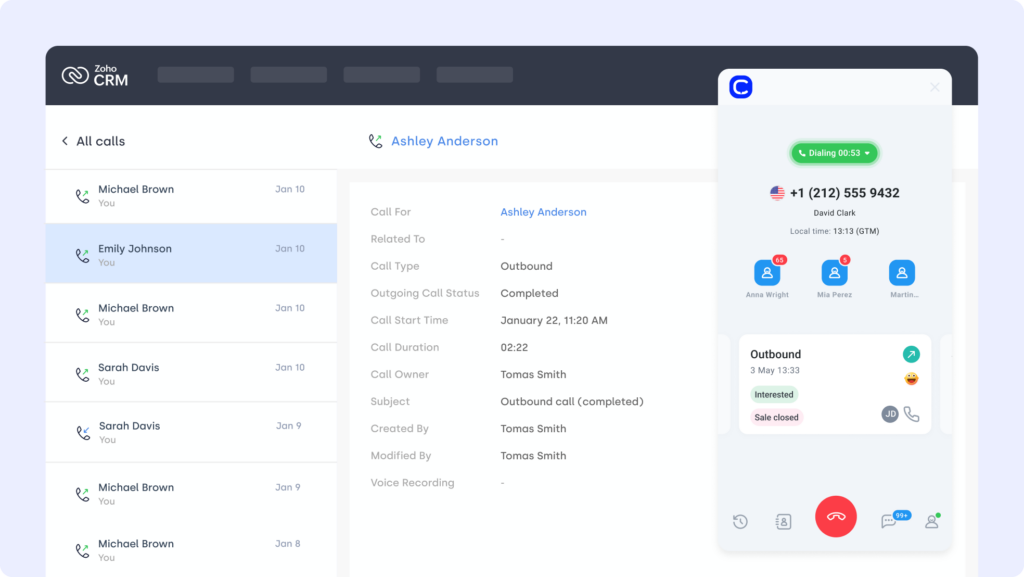
8. Freshdesk (Support Platform)
Freshdesk is a popular customer support tool that helps teams manage tickets, automate responses, and collaborate efficiently. The HubSpot Freshdesk integration connects ticketing and CRM workflows—so support and sales stay aligned without duplicating work.
Use Case:
Turn HubSpot activity into Freshdesk tickets automatically, sync contact updates, and get notified when SLAs are at risk or escalations arise.
Benefits:
- Centralize support tasks across CRM, chat, and helpdesk
- Automate ticket creation from HubSpot records or triggers
- Reduce resolution time with synced customer context
Key Features:
- Create Freshdesk tickets directly from HubSpot
- Sync notes, timelines, and caller info into ticket history
- SLA tracking and ticket alerts sent to your HubSpot dashboard
Pricing:
Freshdesk offers multiple plans for growing support teams:
- Growth: $15/agent/month
- Pro: $49/agent/month
- Enterprise: $79/agent/month
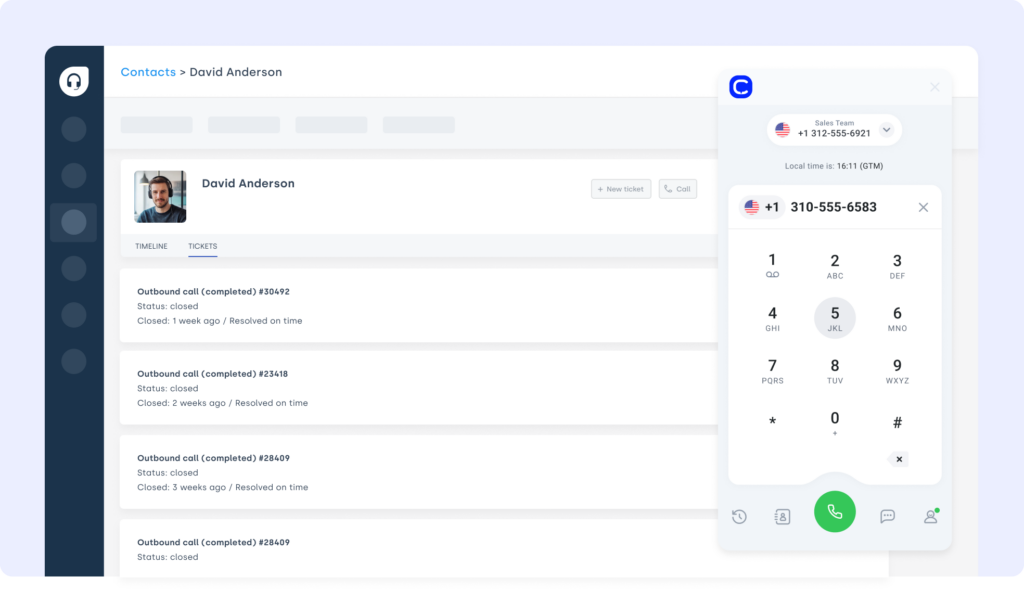
9. ActiveCampaign (Marketing Automation Platform)
ActiveCampaign is an all-in-one platform for email marketing, automation, and CRM. The HubSpot ActiveCampaign integration lets you sync contact data, trigger automations, and align campaigns without jumping between platforms.
Use Case:
Trigger email sequences in ActiveCampaign based on HubSpot activity, track engagement, and ensure timely follow-ups through synced workflows.
Benefits:
- Automate outreach from HubSpot behavior and segmentation
- Align sales and marketing with shared contact visibility
- Increase engagement by syncing behavior and tags
Key Features:
- Trigger automations based on HubSpot actions
- Sync HubSpot contacts and custom fields into ActiveCampaign
- Track campaign activity inside contact profiles
Pricing:
- Plus: $49/month
- Professional: $149/month
- Enterprise: Custom pricing

10. LiveAgent (Helpdesk Software)
LiveAgent is a multi-channel helpdesk platform that unifies chat, email, and call support. The HubSpot LiveAgent integration bridges CRM data with ticketing—keeping support teams informed and workflows centralized.
Use Case:
Route HubSpot activity into LiveAgent tickets, track resolution updates, and ensure agents are alerted to SLA breaches without switching tools.
Benefits:
- Sync HubSpot records with LiveAgent ticket history
- Improve team responsiveness with live ticket alerts
- Centralize support across CRM and helpdesk platforms
Key Features:
- Convert HubSpot events into LiveAgent tickets
- Get SLA breach alerts and internal replies in HubSpot
- Link ticket history and recordings to HubSpot contacts
Pricing:
LiveAgent offers transparent pricing for support teams:
- Small Business: $9/agent/month
- Medium Business: $29/agent/month
- Large Business: $49/agent/month
- Enterprise: $69/agent/month
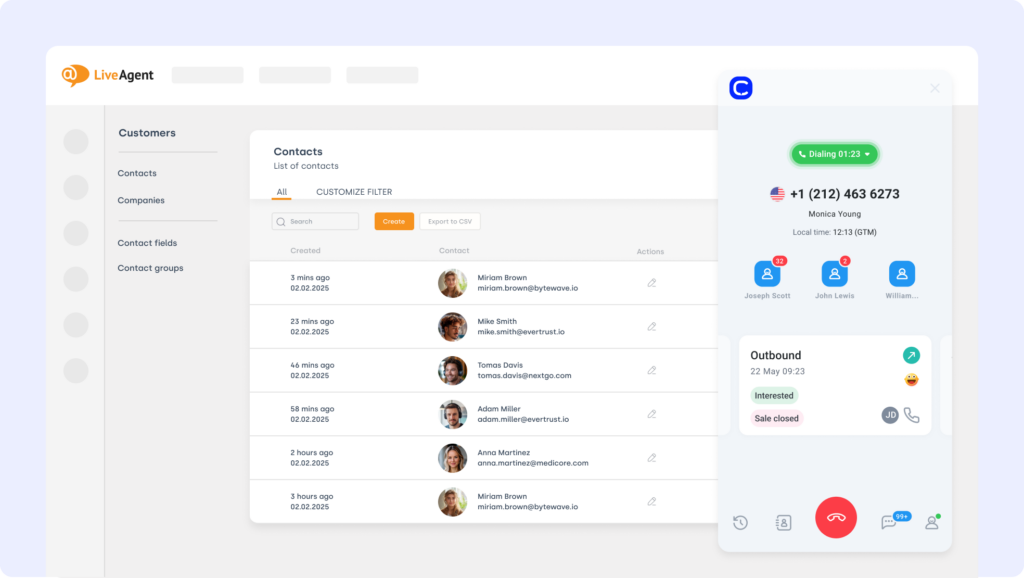
11. Kustomer (Customer Service CRM)
Kustomer is a customer service CRM that unifies conversations into a single timeline. The HubSpot Kustomer integration connects CRM data with case management—helping teams deliver faster, more contextual support.
Use Case:
Turn HubSpot activity into Kustomer tickets, get real-time updates on priority issues, and keep internal teams in the loop with contextual alerts.
Benefits:
- Escalate HubSpot issues directly into Kustomer
- Maintain full conversation history across both tools
- Keep agents informed with timely status updates
Key Features:
- Convert HubSpot threads into Kustomer tickets
- Auto-alerts for SLA breaches and unresolved cases
- Smart routing with tags and workflow triggers
Pricing:
- Professional: $89/user/month
- Enterprise: Custom
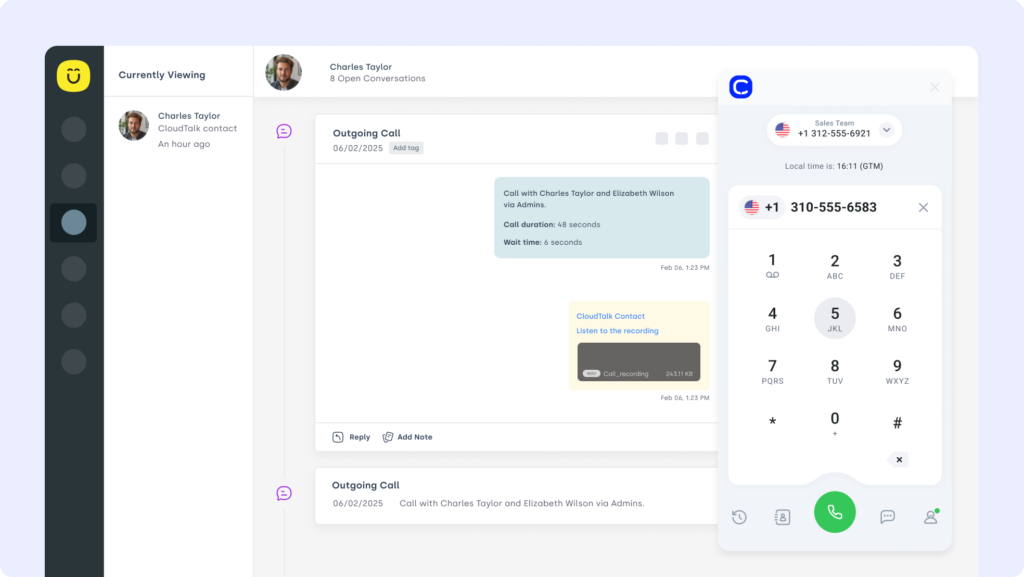
12. Gorgias (Ecommerce Helpdesk)
Gorgias is a helpdesk platform tailored for ecommerce support. The HubSpot Gorgias integration ensures customer tickets can be tracked, escalated, and resolved with full CRM context.
Use Case:
Automatically turn HubSpot interactions into Gorgias tickets and notify relevant teams when issues arise, escalations happen, or follow-ups are needed.
Benefits:
- Route HubSpot tickets to the right agent in Gorgias
- Centralize messaging and ticketing for faster service
- Collaborate on high-impact customer requests in real time
Key Features:
- HubSpot-to-Gorgias ticket conversion
- SLA alerts and ticket activity synced to Gorgias
- Internal notes and context passed between tools
Pricing:
- Basic: $10/month + usage
- Pro: $60/month + usage
- Advanced: $900/month
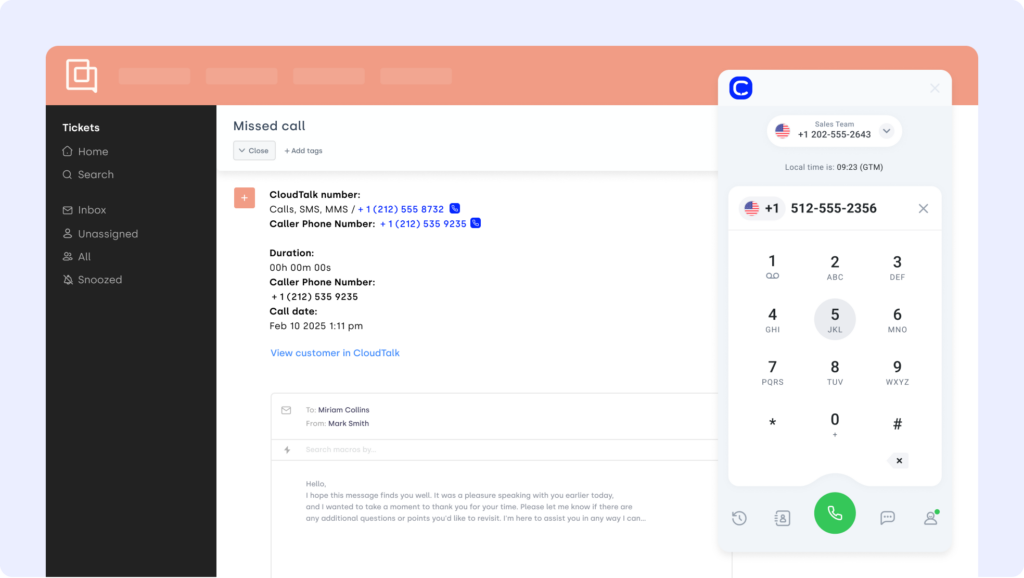
13. Oneflow (Contract management platform)
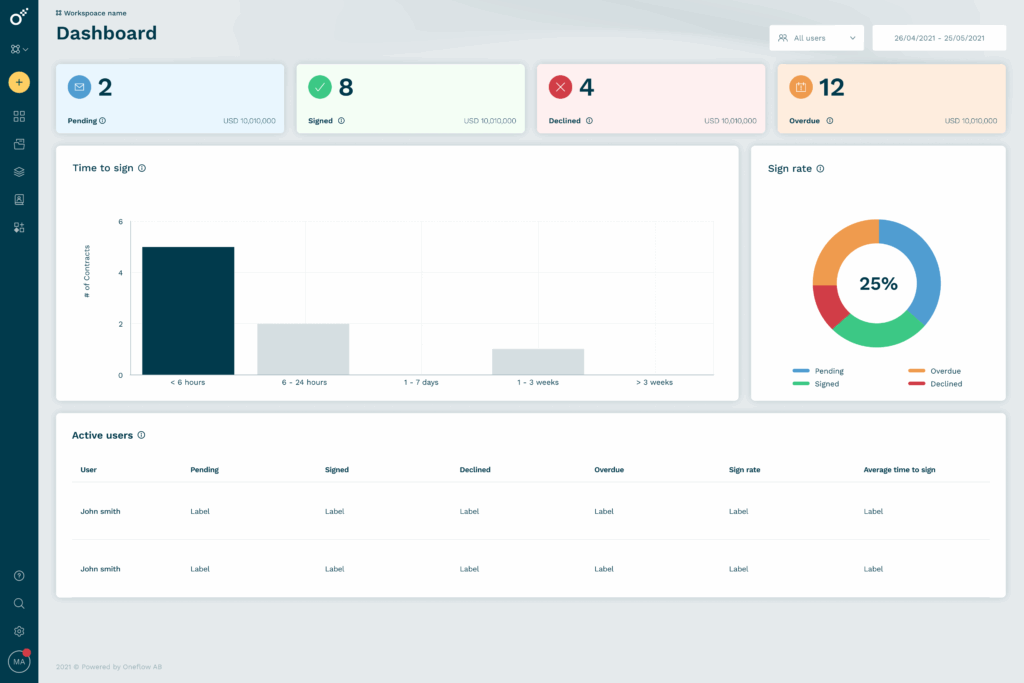
Oneflow is a powerful digital contract platform used by sales, HR, and legal teams to create, collaborate on, and sign contracts faster. With the HubSpot-Oneflow integration, reps can generate and manage interactive, e-signable contracts directly from HubSpot, powered by a bi-directional data sync that keeps everything up to date without manual effort.
Use Case:
Automatically sync deal, contact, and product data from HubSpot into Oneflow contracts—and keep contract stages aligned with your pipeline in real time to streamline sales and remove admin friction.
Benefits:
- Automate contract creation and syncing for faster deal cycles
- Eliminate back-and-forth and manual entry with dynamic, editable contracts
Key Features:
- Bi-directional sync between HubSpot and Oneflow
- Create and send contracts directly from HubSpot deals
- Auto-sync line items and product tables from HubSpot
- Track contract status and engagement in the HubSpot Activity tab
- Enable e-signatures with mobile-friendly, interactive contracts
Pricing:
- Essentials: €17 per user/month
- Business: €44 per user/month
- Enterprise: Custom pricing
Benefits of HubSpot CRM Integration
Integrating HubSpot with your support, sales, and ecommerce stack isn’t just a time-saver—it’s a workflow multiplier. Here are 5 key reasons to integrate:
- Unify Sales, Support, and Marketing
Connect email, chat, call, and campaign data in one timeline—so no rep ever has to guess what happened last. - Trigger Smarter Workflows, Not Just Reports
Launch emails, tasks, or follow-ups automatically based on pipeline status, customer behavior, or form fills. - Eliminate Manual Entry Across Tools
Sync contacts, deals, and tickets in real time—no copy-paste, no duplicates, no time wasted re-entering data. - Personalize at Scale With Live Context
Pull in live activity from chat, email, and voice tools so reps can tailor conversations while they’re happening. - Make Your CRM Actually Easy to Use
With native apps and integrations, HubSpot works where your team works—whether it’s Slack, Gmail, or your dialer.
Workflows aren’t broken—they’re just disconnected. Reconnect them!
How to Choose the Right HubSpot Integration for Your Business
Tailored for real-world HubSpot users.
Pinpoint Your Workflow Bottlenecks
Don’t start with features—start with problems. Are your reps wasting time switching tools? Are deals delayed because of manual updates or missing call data? A good integration closes those gaps, not just adds noise. For example, CloudTalk’s HubSpot integration logs calls, syncs notes, and updates records automatically—so your team works from one source of truth.
Prioritize Tools That Actually Launch
An integration that takes weeks and multiple engineers to implement isn’t a solution—it’s a distraction. Look for one-click installs, native HubSpot apps, and no-code flexibility. CloudTalk’s HubSpot dialer goes live in minutes—without a developer in sight.
Think Long-Term, Not Just Launch Day
Will this integration still work when you double your team? Or support new markets? Scalability isn’t just about user limits—it’s about whether your tools evolve with your business. CloudTalk’s CRM call center solution scales from scrappy sales teams to enterprise-level ops.
Demand Security from the Start
Every integration opens a door to your data. Choose tools that support SSO, audit logs, and role-based access from day one. CloudTalk’s VoIP integration for HubSpot is built with security baked in—so you don’t have to bolt it on later.
Choose Vendors Who Actually Show Up
Demo environments always look great. The real test? What happens when sync fails during peak hours? If your provider hides behind a chatbot, it’s not support—it’s abandonment. CloudTalk’s support team responds with real humans, not hold music.
How to Integrate HubSpot CRM with Other Platforms?
Integrating HubSpot CRM with other tools doesn’t require a dev team or weeks of custom code. In most cases, it’s as simple as choosing the right method based on what your stack looks like.
You can connect HubSpot using:
- Native integrations via HubSpot’s App Marketplace—for platforms like Salesforce, Slack, or Stripe
- iPaaS tools like Zapier or Make—for syncing with apps that don’t have built-in support
- Custom API connections—ideal for proprietary systems or more complex workflows
- Pre-built connectors from third-party vendors—great for tools like phone systems, helpdesks, or ecommerce platforms
For example, CloudTalk’s HubSpot integration installs in minutes, no dev work needed. Just authenticate, map your fields, and your call data starts syncing automatically.
Integrations Aren’t Add-Ons. They’re Multipliers.
The gap between a good CRM and a great operation isn’t strategy—it’s connection. HubSpot gives you the structure. Integrations give you the speed, the visibility, and the momentum.
The question isn’t which tool is the most powerful. It’s which ones actually talk to each other.
Start with the integration that moves the needle every day:
calls, context, and CRM in one place.
Connect CloudTalk to HubSpot today—and stop operating in pieces.
Setup shouldn’t be a separate project. We can help you!
Sources:







